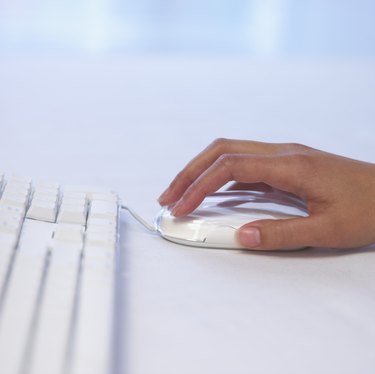
Nerve-damaged hands can occur for a variety of reasons including fractured wrists, carpal tunnel syndrome or congenital disorders. Symptoms can include hand weakness, tingling, pain and inability to properly use the hand. Therapy for nerve-damaged hands concentrates on restoring strength, flexibility and functioning so you can perform everyday tasks more efficiently. Consult with your doctor first since not all therapy may be suitable for your condition.
Improve Grip
Video of the Day
Nerve damage in the hands may occur as a result of an injury to your ulnar nerve, the nerve that runs from your shoulder to your hand and provides sensation and/or movement to your hand or wrist. Therapy can include resistance exercises in order to maintain muscle strength. Work on strengthening your hand muscles by using a hand-held ball as an exercise tool. Squeezing a tennis ball improves grip while strengthening hand and finger muscles. Squeeze the ball as tightly as possible and hold for 10 seconds. Release the tension and relax for 10 seconds. Repeat.
Video of the Day
Improve Coordination
Loss of finger and hand coordination can occur from nerve damage to the hands. Therapy using small Chinese hand balls as exercise tools can help restore dexterity, coordination, flexibility and muscle tone. Chinese hand balls also provide an efficient way to warm up your hand muscles for other exercises. Place two balls into your injured hand and bend your elbow so your forearm is parallel to the floor. Slowly begin rotating the balls with your fingers. Keep the balls in contact with each other. Move the balls for one minute. Stop and relax for 10 seconds; repeat.
Involve Water
People with severe pain levels or joint conditions such as arthritis may find that exercising in water can take pressure off the hands, making movement more fluid and less painful. Water's natural resistance helps strengthen muscles without extra effort, and warm water naturally relaxes the muscles prior to beginning exercise. You can help restore flexibility to your hand by doing some wrist turns. Sit or stand while bending your elbow to a 90-degree angle. Gently turn your wrist so the palm faces the ceiling. Hold this position for 10 seconds. Rotate the wrist downward. Hold this position for 10 seconds. Return to the original position. Relax for 10 seconds. Repeat.
Finger Flexibility
Damaged nerves that require surgical treatment may require a long healing process. During this healing period, keeping your fingers flexible plays a crucial role in preventing joint stiffness. Concentrate on maintaining your finger flexibility by including some finger opposition maneuvers in your therapy regime. Gently lift your injured arm and bend your elbow to a 90-degree angle, palm facing upward. Open your palm and touch the tips of your thumb and index finger together. Hold this position for two seconds. Touch your thumb to each individual finger. Relax for 10 seconds. Repeat.
Is this an emergency? If you are experiencing serious medical symptoms, please see the National Library of Medicine’s list of signs you need emergency medical attention or call 911.